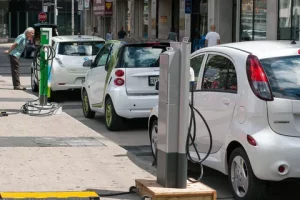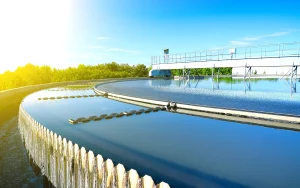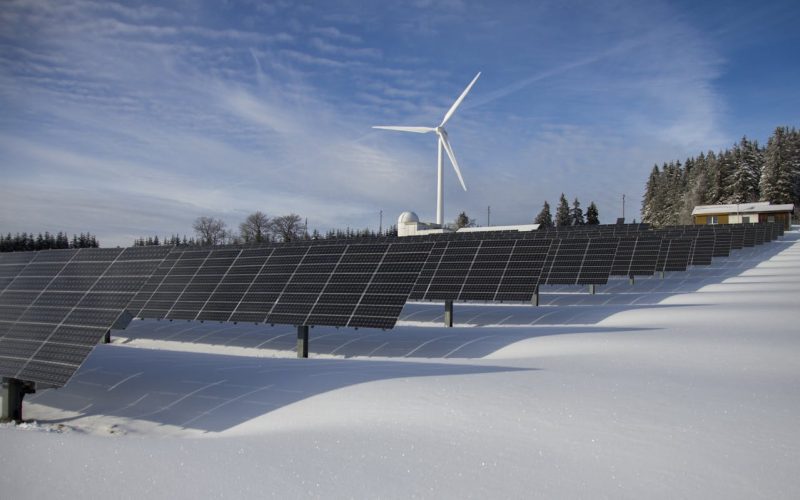Environmental Technology: Paving the Way for a Sustainable Future
The relationship between technology and the environment is more important than ever in a world that changes quickly. Even though progress in technology has added a lot to environmental damage, the rise of environmental technology is a sign of hope. This piece goes into detail about the many ways that technology affects the environment. It shows its benefits, gives examples from real life, and gives case studies that show how it can help with sustainability.
Understanding Environmental Technology

Environmental technology, often referred to as clean technology or green technology, encompasses a wide range of innovations designed to reduce the adverse effects of human activities on the environment. It includes everything from renewable energy sources like solar and wind power to advanced waste management systems and pollution control technologies. By harnessing scientific knowledge for practical purposes, environmental technology seeks to mitigate the environmental challenges we face today.
The Negative Impact of Technology on the Environment
Before discussing the benefits of environmental technology, it is essential to understand the significant negative impacts of traditional technologies. The industrial revolution, which began in the late 18th century, marked a turning point in human history, bringing about unprecedented technological advancements. However, this rapid progress also resulted in severe environmental consequences.
- Pollution: The burning of fossil fuels, industrial emissions, and agricultural runoff have led to air and water pollution on a global scale. Air pollution is primarily caused by harmful gases, including carbon dioxide, sulfur dioxide, and nitrogen oxides, which contribute to respiratory diseases and climate change. Water pollution arises from the contamination of water bodies with domestic waste, industrial effluents, and agricultural chemicals, leading to ecosystem degradation and health issues.
- Resource Depletion: Technology has facilitated the exploitation of natural resources, resulting in depletion at an alarming rate. Activities such as deforestation, mining, and overconsumption of fossil fuels have pushed many resources to the brink of exhaustion. The global eco-footprint now exceeds the Earth’s capacity to regenerate resources, threatening the sustainability of future generations.
- Climate Change: The accumulation of greenhouse gases in the atmosphere due to industrial activities and technology-driven lifestyles has led to global warming. This, in turn, is causing extreme weather events, rising sea levels, and disruptions to ecosystems, highlighting the urgent need for innovative solutions.
The Positive Impact of Environmental Technology

Despite the challenges posed by traditional technologies, environmental technology offers solutions that can help restore balance to our planet. Here are some notable benefits:
1. Renewable Energy
Example: Solar Energy
One of the most significant advancements in environmental technology is the development of renewable energy sources. Solar energy, harnessed through photovoltaic cells, converts sunlight into electricity. This technology not only reduces dependence on fossil fuels but also lowers greenhouse gas emissions.
Case Study: Australia’s Solar Revolution
Australia has experienced a remarkable transformation in its energy landscape, with the number of households using solar panels skyrocketing from 4,600 in 2007 to over 1.6 million by 2017. Government incentives and decreasing costs of solar technology have fueled this growth. As a result, renewable energy now contributes significantly to the national grid, showcasing how environmental technology can drive a shift toward sustainable energy.
2. Smart Technology
Example: Smart Home Devices
Smart technology, integrated into homes and cities, optimizes energy consumption and enhances resource efficiency. Devices connected to the Internet of Things (IoT) allow users to monitor and control energy usage in real time, leading to significant reductions in waste.
Case Study: Energy-Efficient Cities
Cities like Barcelona and San Francisco have embraced smart technology to create energy-efficient urban environments. By deploying smart lighting systems that illuminate only when needed and implementing smart thermostats, these cities have reduced energy consumption and improved residents’ quality of life. The interconnectedness of devices enables better management of resources and contributes to sustainability efforts.
3. Electric Vehicles

Example: Tesla’s Electric Cars
The rise of electric vehicles (EVs) represents a transformative shift in transportation technology. EVs, powered by rechargeable batteries, produce zero tailpipe emissions, significantly reducing air pollution compared to traditional gasoline-powered vehicles.
Case Study: Norway’s Electric Vehicle Adoption
Norway has emerged as a leader in electric vehicle adoption, with over 54% of new car sales in 2020 being electric. The government has implemented various incentives, such as tax exemptions, free charging, and access to bus lanes, to encourage EV adoption. As a result, Norway’s commitment to electric mobility has led to a substantial decrease in greenhouse gas emissions from the transportation sector.
4. Pollution Control Technologies
Example: Air Quality Monitoring Sensors
Advanced pollution control technologies, such as air quality monitoring sensors, play a crucial role in identifying and mitigating pollution sources. These sensors provide real-time data on air quality, enabling authorities to take prompt action.
Case Study: New Delhi’s Air Quality Improvement
In response to severe air pollution, New Delhi implemented an extensive air quality monitoring network that includes sensors strategically placed throughout the city. This initiative has allowed the government to identify pollution hotspots and implement targeted measures, such as temporary vehicle bans and construction restrictions. The data collected has informed policies aimed at improving air quality and public health.
5. Water Treatment Technologies

Example: Advanced Filtration Systems
Water treatment technologies, including advanced filtration systems and bioremediation techniques, help address water pollution and ensure clean drinking water availability.
Case Study: The Chesapeake Bay Restoration
The Chesapeake Bay Restoration initiative in the United States employs innovative water treatment technologies to combat nutrient pollution in the bay. This program utilizes advanced filtration and nutrient management practices to restore water quality and protect aquatic ecosystems. By focusing on sustainable practices, the initiative aims to revitalize the bay’s health while supporting local communities.
The Future of Environmental Technology
As we look to the future, the continued development and implementation of environmental technology will be crucial in addressing the challenges posed by traditional technologies. Here are some key trends and innovations to watch for:
1. Direct Air Capture (DAC)
Direct Air Capture technology aims to remove carbon dioxide directly from the atmosphere, offering a potential solution for mitigating climate change. This process involves capturing CO2 through chemical reactions and sequestering it underground or repurposing it for various applications.
Case Study: Climeworks
Climeworks, a Swiss startup, has pioneered DAC technology with its carbon capture plants. These facilities use renewable energy to power the CO2 capture process, demonstrating a viable method for reducing atmospheric CO2 levels. As the technology matures and costs decline, DAC could play a significant role in achieving climate goals.
2. Sustainable Agriculture Technologies
Innovations in agricultural technology, such as precision farming and vertical farming, aim to minimize resource usage while maximizing crop yields. These approaches leverage data analytics and advanced farming techniques to promote sustainable practices.
Case Study: AeroFarms
AeroFarms, a vertical farming company, utilizes aeroponic technology to grow crops without soil, using 95% less water than traditional agriculture. This sustainable approach allows for year-round production in urban environments, reducing the need for transportation and minimizing resource consumption.
3. Circular Economy Initiatives
The concept of a circular economy promotes the idea of reusing, recycling, and repurposing materials to minimize waste. Environmental technology plays a pivotal role in developing systems that support circular economy principles.
Case Study: Interface Inc.
Interface Inc., a leading carpet tile manufacturer, has embraced a circular economy model by utilizing recycled materials and implementing take-back programs for old carpets. This innovative approach reduces waste and supports sustainability in the textile industry, showcasing how environmental technology can drive positive change.
Conclusion
The relationship between technology and the environment is complex, characterized by both challenges and opportunities. While traditional technologies have contributed to significant environmental degradation, the rise of environmental technology offers a pathway toward a more sustainable future. By harnessing innovations in renewable energy, smart technology, electric vehicles, pollution control, and sustainable agriculture, we can mitigate the negative impacts of our technological advancements.
As individuals and societies, we must embrace environmental technology to foster a sustainable low-carbon economy and protect our planet for future generations. The examples and case studies presented in this article demonstrate that it is indeed possible to turn the tide and leverage technology to restore the balance between human progress and environmental health.
As we move forward, it is crucial to prioritize the development and adoption of environmental technology, ensuring that we are not only aware of its benefits but actively working towards a greener, cleaner, and more sustainable world.












